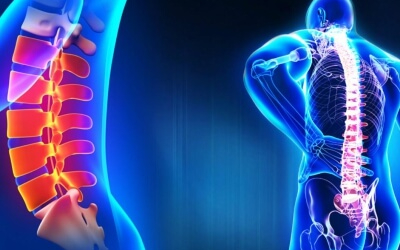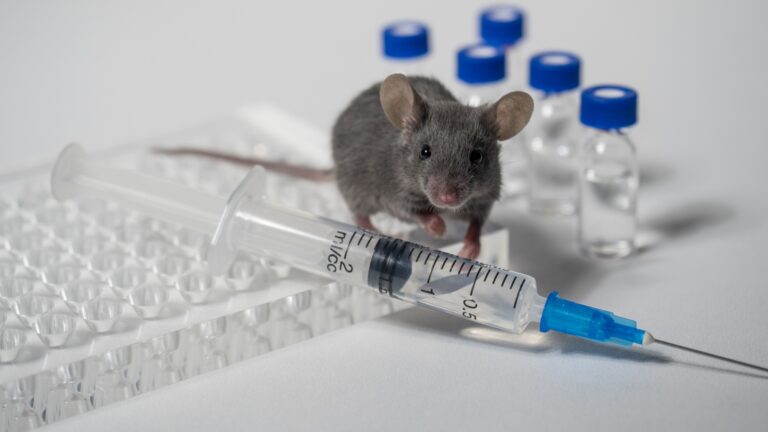It may be possible for paralyzed people to walk within the next few years.
Researchers at Tel Aviv University who successfully implanted lab-made spinal cords in mice are on the verge of doing clinical trials on humans
The following written content from Paul Gallagher

Wheelchair users could be able to walk again “within a few years” according to scientists who successfully implanted lab-made spinal cords in paralysed mice in a world first.
Researchers at Tel Aviv University made the 3D implants using human cells, which had an 80 per cent success rate in restoring the ability to walk in paralysed mice. They used tissue samples which are transformed into functioning spinal cord implants through a process that mimics the development of the spinal cord in human embryos.
The researchers implanted the tissue into two groups of mice: an “acute” group – those who had only recently been paralysed, and a “chronic” group – those who had been paralysed for a long time, equivalent to a year in human terms. Following the implantation, 100 per cent of the mice with acute paralysis and 80 per cent of those with chronic paralysis regained their ability to walk.
Research team leader Professor Tal Dvir said the mice were able to walk “quite well” three months after the spinal implant was inserted.
It is the first time in the world in which implanted engineered human tissues have generated recovery in animals with long-term chronic paralysis, according to the scientists. The group said they have already had discussions with regulators and are preparing to start work on human clinical trials, “potentially bringing hope to millions of paralysed people around the world” who have no effective treatment for their condition.
Professor Dvir said: “We hope to reach the stage of clinical trials in humans within the next few years, and ultimately get these patients back on their feet. The company’s preclinical program has already been discussed with the [US regulator] FDA. Since we are proposing an advanced technology in regenerative medicine, and since at present there is no alternative for paralysed patients, we have good reason to expect relatively rapid approval of our technology.
How it works
A small biopsy of belly fat tissue is taken from the patient. Genetic engineering is used to reprogram fat cells, reverting them to a state that resembles embryonic stem cells – namely cells capable of becoming any type of cell in the body.

The stem cells are placed in a hydrogel and in a process that mimics the embryonic development of the spinal cord, the cells are engineered into spinal implants which are then ready for implantation.
“Individuals injured at a very young age are destined to sit in a wheelchair for the rest of their lives, bearing all the social, financial, and health-related costs of paralysis. Our goal is to produce personalised spinal cord implants for every paralysed person, enabling regeneration of the damaged tissue with no risk of rejection.”
Professor Dvir said the technology is based on taking a small biopsy of belly fat tissue from the patient. The researchers used genetic engineering to reprogramme the cells and return them to a state that resembles embryonic stem cells – the cells capable of becoming any type of cell in the body.
The research team also said their method of regenerating motor neuron cells can be used to treat many different diseases and injuries, such as Parkinson’s disease, brain trauma and heart attacks. Their study is published in Advanced Science.
Last year, a team of British scientists created a 3D printed brain implant, which can be connected to a computer and used to treat spinal injury patients. They designed the implant so it can fit on the surface of the brain, the spinal cord, peripheral nerves or muscles, and hoped the implants could be adapted to use in humans with paralysis. Read more from Inews
Subscribe here
Read ” Breakthrough drug reverses paralysis in mice”
From November 14th 2021

Breakthrough drug reverses paralysis in mice
Humans clinical trials may be the next step toward reversing paralysis. Spinal cord injuries in mice were repaired in four weeks, after a single, inexpensive injection of this new drug.
Researchers at Northwestern University have developed a “breakthrough” new therapy to help paralyzed mice walk again that could result in a potentially life-changing treatment for humans.
Scientists injected a gel into the spinal cords of mice that contains nanofibers in order for them to mimic spinal cord molecules triggering them into movement.
The following written content from AFP

Scientists in the United States have developed a new form of drug that promotes the regeneration of cells and reversed paralysis in mice with spinal injuries, allowing them to walk again within four weeks of treatment.
The research was published in the journal Science on Thursday, and the team of Northwestern University scientists behind it hope to approach the Food and Drug Administration in the US as early as next year to propose human trials.
“The aim of our research was to develop a translatable therapy that could be brought to the clinic to prevent individuals from becoming paralysed after major trauma or disease,” Northwestern’s Samuel Stupp, who led the study, told AFP.
Curing paralysis is a longstanding goal of medicine. Other cutting-edge research in the field includes experimental treatments using stem cells to make new neurons (nerve cells), gene therapy that tells the body to produce certain proteins to aid nerve repair or injecting proteins.
Stupp’s team, on the other hand, used nanofibres to mimic the architecture of the “extracellular matrix” – a naturally occurring network of molecules surrounding tissue that is responsible for supporting cells.about:blank
Each fibre is about 10,000 times narrower than a human hair, and they are made up of hundreds of thousands of bioactive molecules called peptides that transmit signals to promote nerve regeneration.
The therapy was injected as a gel into tissue surrounding the spinal cords of lab mice 24 hours after an incision was made in their spines.
The team decided to wait a day because humans who receive devastating spinal injuries from car accidents, gunshots and so on also experience delays in getting treatment.
Four weeks later, the mice who received the treatment regained their ability to walk almost as well as before the injury. Those left untreated did not.
The mice were then put down to examine the impacts of the therapy on a cellular level, and the team found dramatic improvements to the spinal cords.
A key discovery by the team was that creating a certain mutation in the molecules intensified their collective motion and heightened their efficacy.
This is because receptors in neurons are naturally in constant motion, Stupp explained, and increasing the motion of the therapeutic molecules within the nanofibres helps connect them more effectively with their moving targets.

The researchers in fact tested two versions of the treatment — one with the mutation and one without — and found that mice that received the modified version regained more function.
The gel developed by the scientists is the first of its kind, but could usher in a new generation of medicines known as “supramolecular drugs,” because the therapy is an assembly of many molecules rather than a single molecule, said Stupp.
According to the team, it is safe because the materials biodegrade within a matter of weeks and become nutrients for cells.
Stupp said he hopes to rapidly move directly to human studies next without the need for further animal testing, such as on primates.
This is because the nervous system is highly similar across mammal species and “there is nothing out there to help spinal cord injury patients, and this is a huge human problem,” he said. Read more from Euronews




